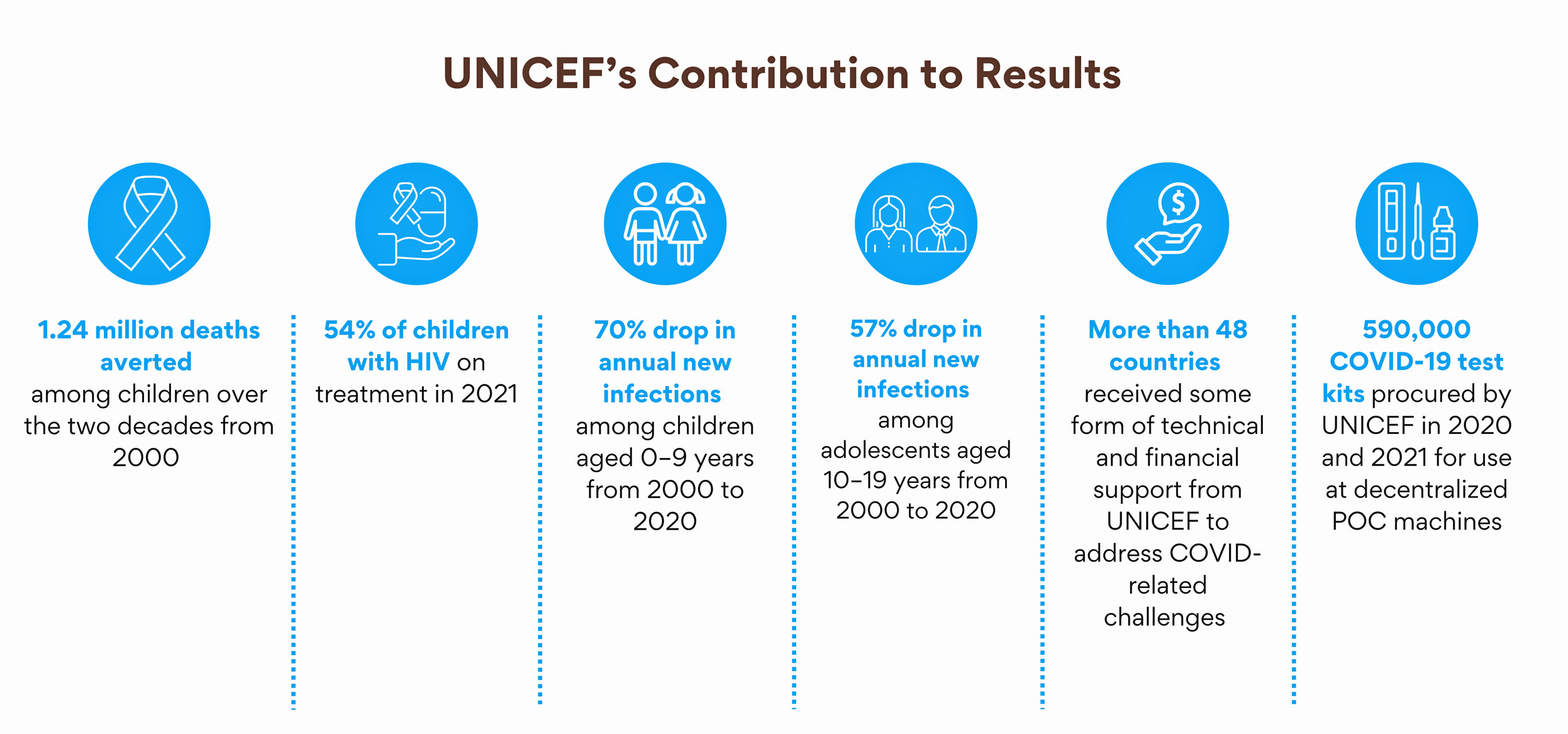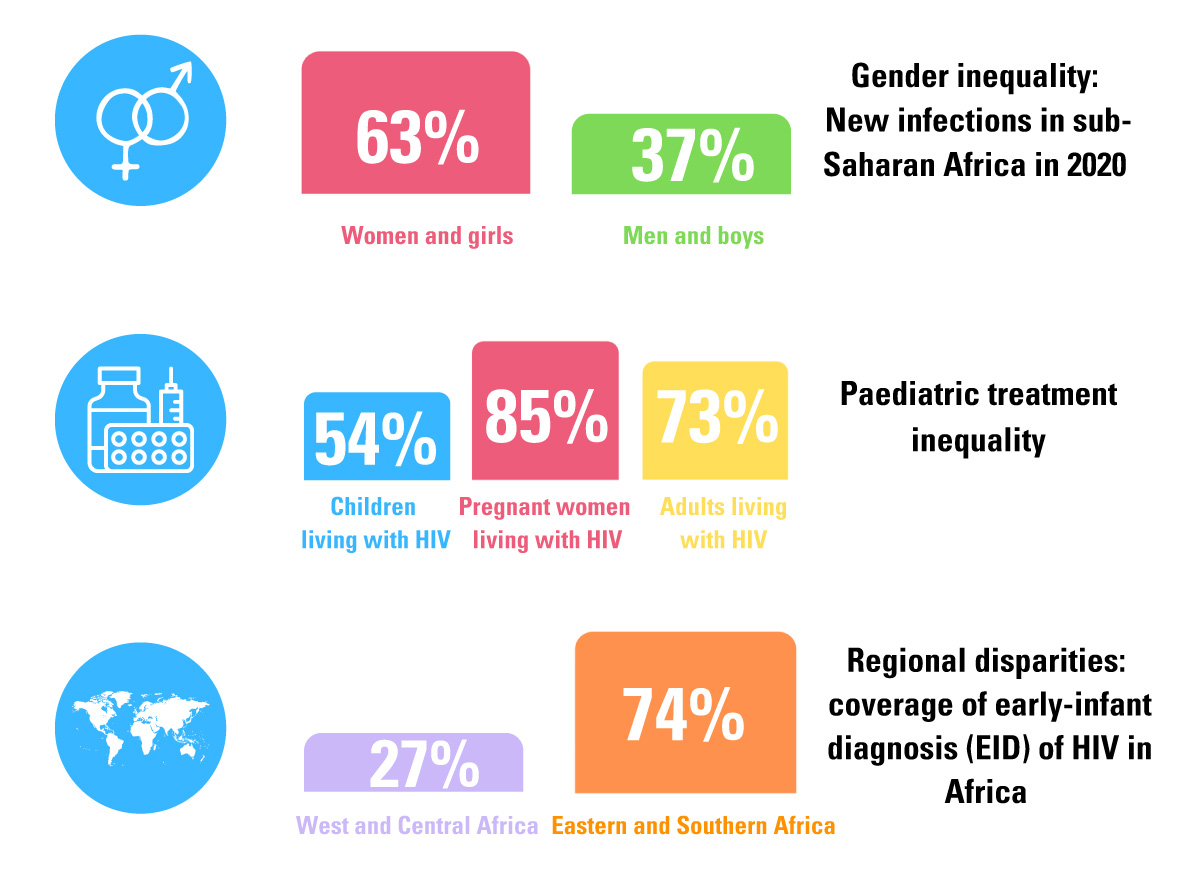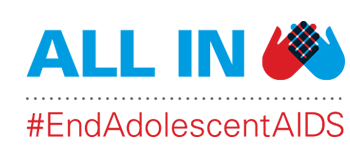Synthesis Report: Identifying Drivers and Mitigators of Adolescent HIV and Sexual and Reproductive Health Risk
This synthesis report reflects a comprehensive review of the body of research undertaken through the Evidence-to-Action partnership.
This synthesis report reflects a comprehensive review of the body of research undertaken through the Evidence-to-Action partnership.
THIS REPORT IS FORTHCOMING AND WILL BE PUBLISHED JANUARY 2024.
This report examines the HIV epidemic and response among young people, including key populations, in the Middle East and North Africa, using both quantitative and qualitative data. It focuses on marginalized young people who are highly exposed to various health risks but not reached with information, services and tools.
UNICEF continues to play a critical role in driving progress toward the end of HIV and AIDS among children, adolescents and pregnant women. In 2022, together with partners across sectors, UNICEF advanced the quality and scope of programming for HIV prevention, treatment and care while mitigating the impact of challenges – such as COVID-19 – to the availability of and access to HIV services.
UNICEF’s HIV programme is guided by the UNICEF Strategic Plan for 2022–2025. The 2022 Global Annual Results Report for Goal Area 1 presents results in fast-tracking the end of HIV and AIDS as well as the results for interconnected programmes in health, nutrition, and early childhood development.
See an excerpt focused on HIV in the following viewer and download the full 2022 Global Annual Results Report: Goal Area 1 document below.
To learn more about UNICEF’s HIV programme, visit www.unicef.org/hiv.
UNICEF's 2022 World AIDS Day report provides global and regional statistical updates on children, adolescents and pregnant women. It provides seven calls to action to equalize progress for children, adolescents and pregnant and breastfeeding women living with HIV and summarizes trends, gaps and successes in the global HIV response.
Flip through the 2022 World AIDS Day Breakthrough Partnership Spotlight Report, which highlights the Breakthrough Partnership in Uganda to support children and adolescents living with and at risk of HIV, unveiling powerful stories from the field from partners and youth champions.
It is clear that the AIDS epidemic is not over. The pace of progress is too slow to meet the 2030 SDG targets. To promote faster and more consistent improvement, the new UNICEF Strategic Plan emphasizes differentiation, integration, partnership and innovation to address barriers to inequalities.


This report presents the results of a mapping of HIV-sensitive social protection programmes in 15 'fast track' countries in eastern and southern Africa. The exercise, commissioned by WFP and ILO, aimed at understanding how existing social assistance and social security programmes in the region are integrating the vulnerabilities exacerbated by HIV.
Social protection can be a critical enabler of efforts to reduce HIV risks, mitigate their impacts, and increase the capacity of households to cope and respond to the risks. Social protection can also be used as an entry point to address deeply rooted social vulnerabilities and structural factors faced by those who are vulnerable to HIV infection.
Ensuring that populations who are living with, at risk of or affected by HIV and/or TB can effectively access prevention, diagnosis and treatment services is crucial. Social protection systems have a pivotal role to play in the coverage of both direct medical and non-medical costs, as well as income loss incurred due to the disease. This paper provides examples of institutional practices that improve the inclusiveness of national social protection schemes for people living with HIV and/or TB and the responsiveness of such schemes to their needs.
This document evaluates the Expansion and Scale-Up of HIV-Sensitive Social Protection in Eastern and Southern Africa initiative, implemented by UNICEF in Malawi, Mozambique, Zambia and Zimbabwe from 2014-2018 with support from the Dutch government. It assesses the extent to which the initiative met its objectives and achieved the expected results and documents the successes, challenges and lessons learned in the implementation.
Under the initiative, UNICEF Eastern and Southern Africa Regional Office (ESARO) and UNICEF Country Offices provided technical assistance to the four priority countries, and documented cross-country learnings. Activities under this initiative differed in their design and execution, allowing for adaptation to country contexts. In Malawi, activities focused on monitoring and evaluation of the National Social Support Policy; designing and implementing a system to refer cash transfer beneficiaries to HIV-related social services; and creating demand for HIV services among adolescents. In Mozambique, activities focused on providing policy-level support to the operationalization of the new social protection strategy, strengthening community-based and statutory case management, and conducting social protection fairs. In Zambia, the Government and UNICEF evaluated and scaled up a package of services that aims to increase the utilization of HIV services by adolescents. In Zimbabwe, the initiative focused on strengthening the child protection case management system and ensuring linkages between the country’s flagship cash transfer programme and HIV-related services, by using payment days to deliver services. In addition, the initiative’s regional component, led by UNICEF ESARO, focused on documentation and dissemination of best practices and overall technical assistance to the country offices involved.
ALL In to #EndAdolescentAIDS
Around the world, an estimated 2.1 million adolescents between the ages of 10 and 19 years were living with HIV in 2016. Some 260,000 older adolescents (aged 15–19 years) were newly infected with HIV in 2016, or nearly a new infection every two minutes. Nearly three out of four new infections occurred in sub-Saharan Africa. And adolescent girls continue to be disproportionately affected. Globally, nearly two thirds (65 per cent) of new HIV infections among adolescents aged 15–19 years were among girls.
Progress in preventing new infections among adolescents remains unacceptably slow, with new infections declining by only 14 per cent since 2010. Equally concerning, between 2000 and 2015, annual AIDS-related deaths declined for all age groups except adolescents (aged 10–19 years).
Demographic realities further undermine recent hopeful trends. In sub-Saharan Africa, the region most affected by HIV, the youth population has begun to explode in size and will continue to do so, with projections indicating that the number of people younger than 20 will double in 2030. That means redoubled efforts will be necessary to prevent an increase in new HIV infections among adolescents.

The ALL IN agenda was introduced to drive social change for better results in adolescents, to improve strategic prioritization and programming for adolescents, and to foster innovation and advocacy to ensure that countries build stronger, more sustainable systems; engage adolescents in the response and provide quality health care. It is a Fast-Track response for adolescents—linked to the Three Frees initiative ('Start Free', 'Stay Free', 'AIDS Free') to accelerate service delivery towards attaining both the 90–90–90 and adolescent specific targets.